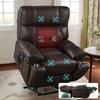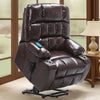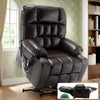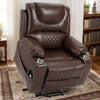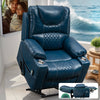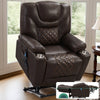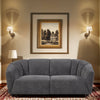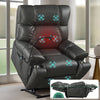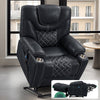Introduction to Modular Sectionals and Traditional Sofas
The Evolution of Sectional Sofas in Modern Homes
Sectional sofas have come a long way since their inception. They've evolved to meet the changing needs of modern homes. Today's sectionals offer more than just seating. They provide flexible solutions for various living spaces.

Modular designs allow for easy rearrangement. This feature adapts to different room layouts and lifestyles. The rise of open-plan living has boosted sectional popularity. They can define areas within larger spaces, creating cozy nooks.
Recent trends show a move towards sleeker, more minimalist designs. These styles blend well with contemporary interiors. Some even include tech features like built-in USB ports.
Key Features of Modular Sectionals
Modular sectionals stand out for their versatility. They consist of individual pieces that can be arranged in multiple ways. This flexibility is a key selling point for many homeowners.
- Customizable configurations
- Mix-and-match options for fabrics and colors
- Expandable design for growing families
- Space-saving corner units
- Built-in storage in some models
- Removable and washable covers for easy maintenance
Many modular sectionals also offer reclining features. Some even include big and tall power recliners for added comfort. These features cater to a wide range of preferences and body types.
Advantages of Traditional Sofas
Traditional sofas have stood the test of time for good reasons. They offer a classic look that fits various decor styles. Their fixed shape provides a sense of stability in room design.
- Timeless aesthetic appeal
- Often more affordable than large sectionals
- Easier to move and rearrange
- Suitable for formal living rooms
- Available in a wide range of styles and sizes
- Can anchor a room's layout effectively
Traditional sofas are often the go-to choice for smaller spaces. They don't require as much planning or floor space as sectionals. This makes them ideal for apartments or cozy living rooms.
Evaluating the Versatility of Modular Sectionals for American Homes
Space-Saving Solutions in Small Apartments
Modular sectionals shine in small apartments. They offer clever ways to maximize seating without overwhelming the space. Corner units can turn dead space into useful seating areas.

Many modular designs include storage options. This feature is a boon for small living spaces. Hidden compartments can store blankets, pillows, or other items.
Some sectionals convert into beds. This dual-purpose furniture is perfect for studio apartments or guest rooms. It eliminates the need for a separate guest bed.
Armless pieces can create a more open feel in tight spaces. They allow for easy movement around the room. This can make a small apartment feel larger and more inviting.
Modular Sectionals for Adaptable Living Spaces
Adaptability is a key strength of modular sectionals. They can change with your needs over time. This makes them ideal for growing families or frequent movers.
- Easily add or remove sections as needed
- Rearrange to accommodate new room layouts
- Split into separate seating areas for parties
- Combine with ottomans for extra versatility
Some homeowners use modular pieces in multiple rooms. This flexibility allows for creative use of furniture throughout the home. It's a cost-effective way to refresh your living spaces.
Customization Options to Match Diverse Aesthetic Preferences
Modular sectionals offer extensive customization options. This allows homeowners to create a look that truly reflects their style. Fabric choices range from leather to performance fabrics.
Color options are virtually limitless. You can mix and match colors within a sectional for a unique look. This allows for easy updates to your decor over time.
Leg styles and wood finishes can be customized. This ensures your sectional fits perfectly with your existing furniture. Some brands even offer custom sizes for an exact fit in your space.
The Financial and Functional Impact of Modular Sectionals on Your Living Room
Cost-Benefit Analysis of Modular vs. Traditional Sofas
When comparing costs, consider long-term value. Modular sectionals may have a higher upfront cost. However, their versatility can offer savings over time.

- Initial cost: Traditional sofas often cost less upfront
- Long-term value: Modular sectionals can adapt to changing needs
- Replacement costs: Modular pieces can be replaced individually, saving money
- Moving expenses: Traditional sofas may be easier and cheaper to move
Consider your lifestyle when making a decision. If you move frequently, a traditional sofa might be more practical. For those planning to stay put, a modular sectional could be a wise investment.
Long-Term Durability and Maintenance Tips
Both modular sectionals and traditional sofas can be durable with proper care. Here are some tips to extend the life of your seating:
- Rotate cushions regularly to ensure even wear
- Vacuum upholstery weekly to prevent dirt buildup
- Treat spills immediately to avoid staining
- Use arm covers to protect high-wear areas
- Consider professional cleaning once a year
For modular sectionals, check connections between pieces periodically. Tighten any loose hardware to maintain stability. With traditional sofas, pay attention to spring support and frame integrity.
Concluding Thoughts on Sectional vs. Traditional Sofa Choices
The choice between a modular sectional and a traditional sofa depends on various factors. Consider your space, lifestyle, and long-term needs. Modular sectionals offer flexibility and adaptability. Traditional sofas provide timeless appeal and simplicity.
For those who value versatility and have changing needs, a modular sectional might be ideal. If you prefer a classic look or have a smaller space, a traditional sofa could be the better choice.
Remember, comfort is key. Test out different options before making a decision. Whether you choose a big and tall power recliner or a classic loveseat, your living room should reflect your personal style and needs.








